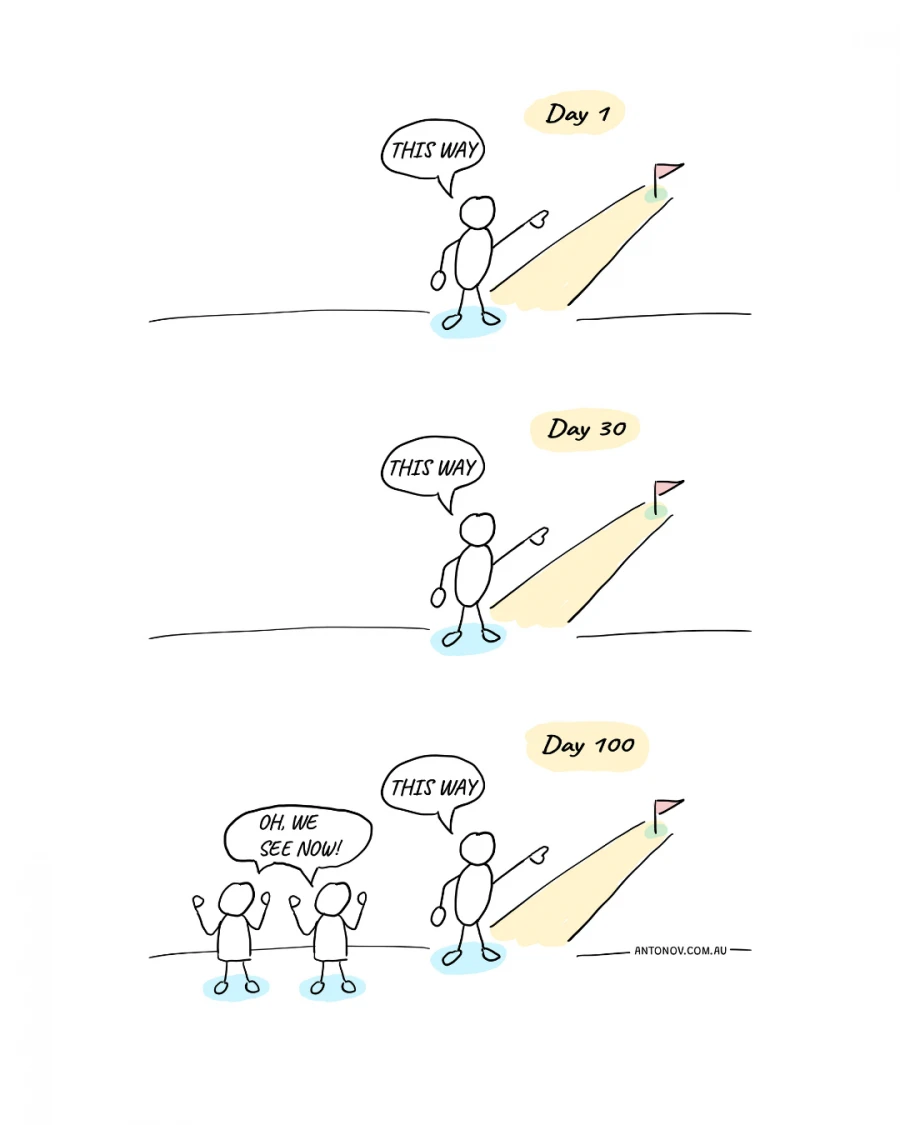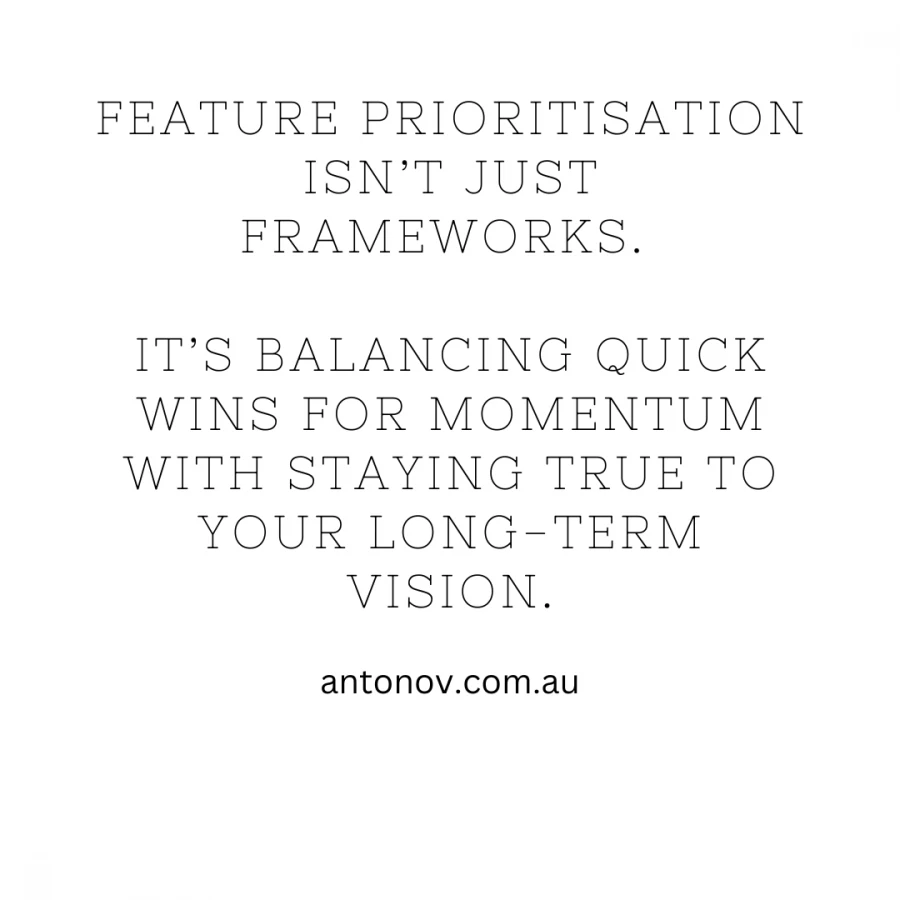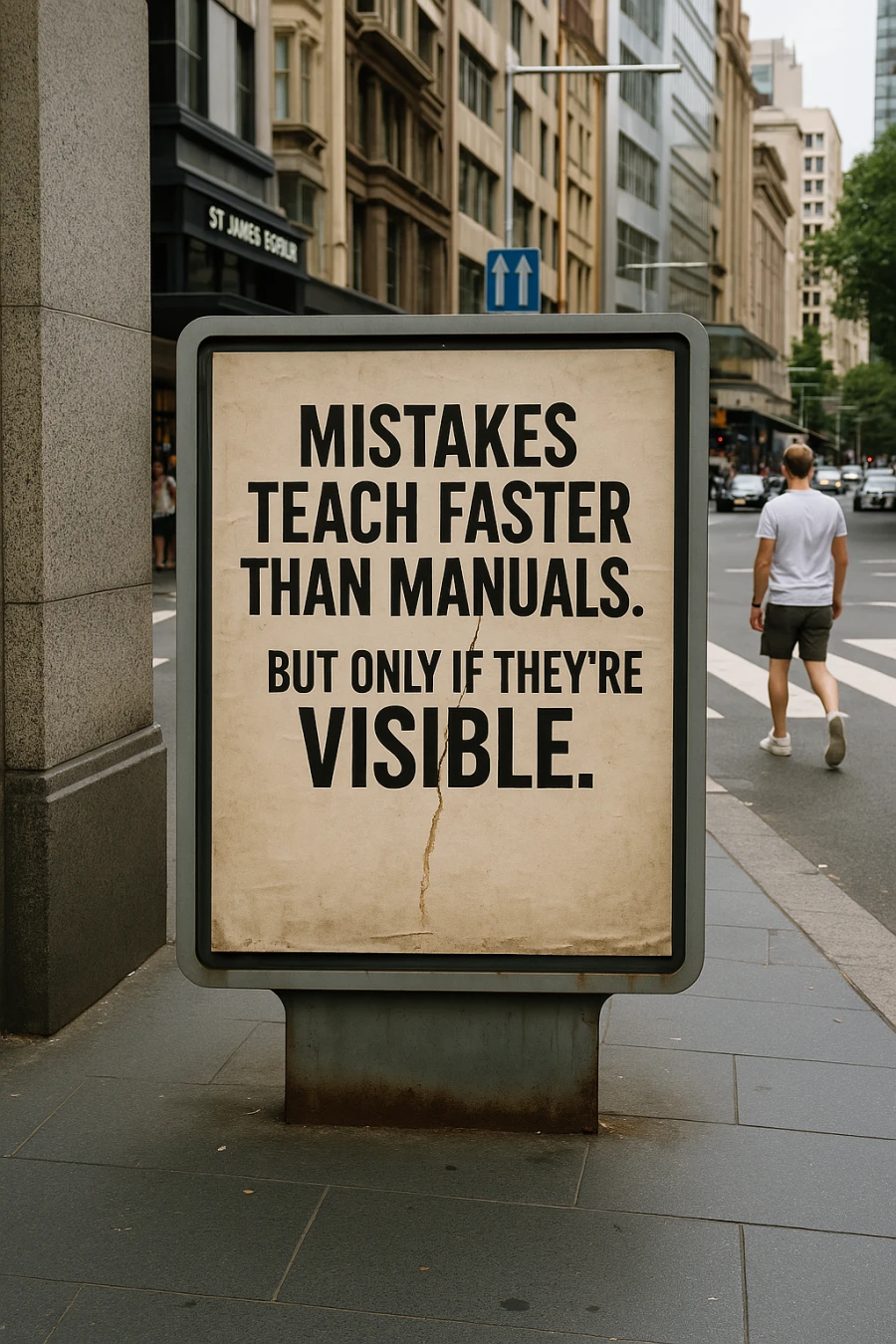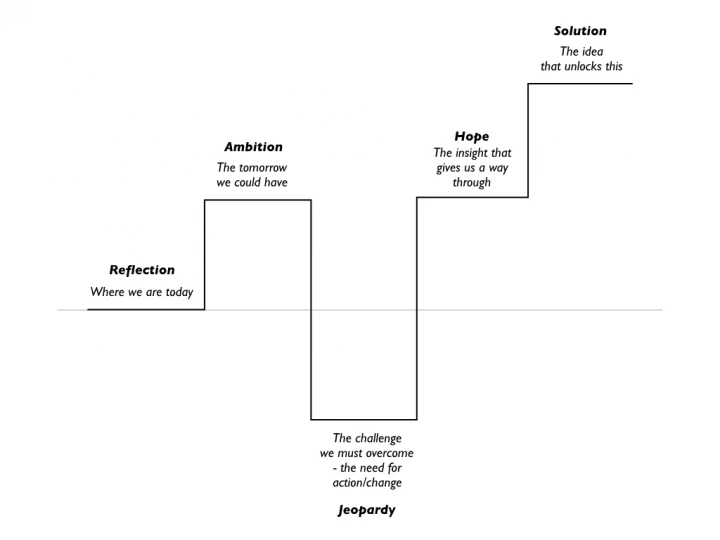-
A strategy document should guide, not confuse.
The purpose of strategy is to align and direct an organisation toward shared goals. When it's overly complicated, it fails its primary mission. Strategy should be simple, clear and actionable.
As a product manager, your role is to create alignment. Work with your team and stakeholders to ensure clarity. If the strategy you're handed is unclear, don't sit with confusion. Simplify it. -
A leader's journey starts alone.
Leadership needs the courage to push boundaries and challenge norms. It feels great and is fulfilling and, at the same time, isolating.
When driving change, the slow pace of buy-in or lack of immediate support can feel like standing alone. But that solitude is a marker of progress. This is how it should feel at first.
That's when you need patience. You are just creating space for others to join when they are ready. They just need time to process.
Feeling lonely as a leader isn't failure. Every great idea starts with someone bold enough to stand alone until others see the path forward.

-
Clarity is a PM's superpower. Early in a career, speed feels like the ultimate skill. Later, strategy seems like the key. Over time, it becomes clear - strong communication makes the difference.
Brilliant strategies crumble without understanding. Clear communication creates alignment. Alignment builds trust. A team that trusts your judgement will follow your lead, and leadership confident in your clarity will give you room to excel.
Great PMs don't just build products. They build trust by making the complex simple and the ambiguous clear. -
Hesitating to share a weird idea kills creativity. Fear of judgement silences potential brilliance.
Most unconventional ideas won't work. But the rare one that does can change everything. What seems absurd in one moment might solve a problem in another. Creativity thrives on the unexpected and bold ideas are the spark for breakthroughs.
By embracing the bizarre, teams unlock new possibilities. Instead of dismissing “stupid” ideas, explore them. Confidence to share fuels progress and every idea becomes a seed for innovation. -
A successful product balances execution and vision. As Melissa Perri highlights, it's not just about delivering but steering in the right direction. Markets shift. Challenges arise. Opportunities emerge. Pivoting with purpose defines lasting success.
A good company strategy should be made up of two parts: the operational framework, or how to keep the day-to-day activities of a company moving; and the strategic framework, or how the company realizes the vision through product and service development in the market.
-
Bold ideas unlock progress.
When crafting new products or features, it's easy to focus on safe, incremental improvements. These solutions feel achievable and practical but they rarely break new ground.
Adding a bold concept into the mix forces the team to think beyond limitations. Even if the daring idea doesn't make it to launch, it creates a spark. It pushes boundaries, reshapes how problems are viewed and reveals opportunities overlooked in safer designs.
A bold solution isn't just a backup plan. It's a catalyst for better work. -
Good managers know when to step back.
Intervening too often stifles creativity, ownership and morale. Teams thrive when leaders provide clear direction, trust their abilities and give them space to execute. Micromanagement creates bottlenecks, while autonomy pushes innovation and accountability.
The best work happens when leaders empower, not overshadow. -
Trust between a founder and their first Head of Product defines whether a startup scales or stalls.
Founders often start as the Head of Product, driving vision, roadmaps and hiring. But as a company grows, splitting attention across fundraising, culture, operations and strategy leaves product leadership exposed. Bringing in a Head of Product isn't just inevitable - it's essential. The challenge is doing it without breaking the momentum or diluting the founder's vision.
Alignment is the foundation. A great Head of Product doesn't just execute - they embody and challenge the founder's instincts, building scalable systems around them. -
Leaders thrive on connection. Taking time to engage with teams builds trust and fuels collaboration.
The risk lies in misreading commitment. Valuing late nights over outcomes sends the wrong message, tying effectiveness to hours rather than impact.
Great leadership doesn't trade presence for results. It inspires through balance and focus.
One of the smartest things the new CEO did was start an “open door” policy. His version of that was walking around and getting to know people, but also inviting anyone and everyone to stop by his office after 4 p.m. to talk; there was no agenda. He let them know that he would stay as late as necessary if they wanted to chat. Many nights he didn't leave the office until 8 or 9 p.m.
David Rohlander, The CEO Code -
A team doesn't always need a dedicated product manager.
In startups, founders often take on this role naturally, using their deep understanding of the market and their vision for the product.
In larger companies, if the team already has a strong handle on strategy, data and market needs, they can absolutely operate without a formal PM. However, someone still needs to take charge of the product function - making prioritisation decisions clear and aligning the team around common goals. -
Feature prioritisation isn't always about frameworks like ICE (Impact, Confidence, Effort), Kano or MoSCoW.
Sometimes, it's about building momentum - creating buzz, lifting your team's morale, staying ahead of competitors or even strengthening internal relationships.
The challenge is finding the balance between chasing these quick wins and staying true to your long-term vision.

-
Mistakes teach faster than manuals. But only if they're visible. And shared before they sit quietly and start to build up.
When a leader owns a mistake in front of their team, something powerful happens. The room relaxes. People stop pretending everything is perfect. They stop tiptoeing. It sends a message that trying, failing and learning is part of the job - not a threat to it.
Most teams don't freeze from lack of skill. They freeze from fear. Fear of saying the wrong thing. Fear of trying something new. Fear of being the only one who didn't get it right. But when a leader steps up and says, “Here's what I got wrong, here's what I learned and here's what I'm changing,” that fear starts to fade.
Because the next time something goes sideways, there's no hiding. You've already shown how it's done - how to take ownership, how to bounce back.
But don't overdo it. This isn't about dumping your insecurities on your team or confessing every minor wobble. It's not a therapy session. Oversharing makes people uneasy.
So keep it simple. Share what's useful. Wrap it in action. Frame the mistake as a lesson, not a spiral. Make it clear you're learning faster than before - and pulling the team forward with you.

-
Seth Godin & Lenny
Branding: A Promise Kept Every Time
A brand isn't a logo. It's a promise. In a crowded AI market, success isn't about having AI - it's about solving problems. Loyalty comes from defining a clear promi... Read more -
A powerful strategic narrative creates clarity, not complexity.
If you're a business leader, team lead or strategist looking to align and motivate people around a clear direction, the posts you've shared offer a goldmine of principles that support and extend the Strategic Narrative Tool (from Strategy Needs Good Words). That framework asks teams to define who they are, where they're going and why it matters - then communicate it in a way that inspires action. Here's how your writing already lives that out:
Start with decisions, not slogans. Your offsite advice is sharper than most strategy decks:
“What will we say no to? What will we fund? What changes Monday morning?”
That's not theory. That's a story people can follow. Strategic narrative works when it starts with choices.
Make clarity the culture. Culture isn't vibes - it's behaviours.
“What's praised. What's punished. Used in hiring. Reinforced in feedback. Lived under pressure.”
Strategic narratives lose power when values sound good but mean nothing. You show how to anchor them in action.
Keep repeating the vision. You call out a mistake many founders make:
“They think one deck, one all-hands, one strategy doc is enough.”
But repetition builds rhythm. A good narrative becomes the background music of the company.
Direction beats alignment. When teams stall, it's not due to lack of planning. It's lack of clarity.
“Don't confuse a plan with a strategy. Don't confuse activity with progress.”
Strategic narratives should simplify the noise, not add to it. You deliver that.
If someone asked how to put a strategic narrative into action, this writing is the how.
No fluff. Just sharp words, used well, to drive clarity and action.
That's what moves teams. That's what builds belief.

-
I can't recall where I found this picture, but it's such an interesting analogy. Leadership is like farming - nurture the right conditions and growth will follow.
That said, sometimes you end up with the wrong crops or weeds mistaken for crops and it's just as important to weed those out.

-
Takeaways: How a great founder becomes a great CEO
Key takeaways from Lenny's podcast: "How a great founder becomes a great CEO | Jonathan Lowenhar"
Most founders struggle to make this distinction. The instincts and drive that help you launch a busin... Read more -
The Most Important Skill for Product Managers
As my product management career has progressed, my perspective on the most important skill has changed. Early on, I thought it was all about speed - getting things done fast. Later, I believed strateg... Read more -
Takeaways: Identify your bullseye customer in one day
Key takeaways from Lenny's podcast: "Identify your bullseye customer in one day | Michael Margolis"
That's the promise of the Bullseye Customer Sprint, a framework shared by Michael Margolis (UX Rese... Read more -
Culture is shaped by the people within it. Sometimes, one person is all it takes to spark positive change.
An employee who offers genuine encouragement, lends a hand to solve a problem or suggests small but meaningful improvements can transform a team's energy - one action at a time.
This is the quiet yet powerful force of influence.
Amplify their voices.
Support them.
Elevate them.
Let their impact ripple further.

-
Silos.
Break them whenever you see them.
Silos keep teams from seeing the whole market picture.
Silos risk losing sight of the customer, prioritising internal goals and creating a fragmented experience.
Silos slow everything down - teams hold onto information, delaying solutions.
Silos leave teams blind to risks outside their scope.
